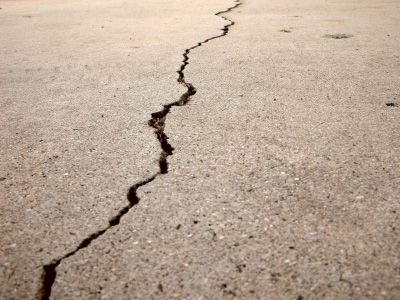Seismic retrofit: Get your home ready for earthquakes
Joshua Monen
If you’re a homeowner living in an earthquake-prone state, then it’s important you prepare your home for a major earthquake. Many homes built prior to the mid-1970s are not properly secured to the foundation and can easily slide off in the event of an earthquake.
This presents a risk to the building and to anyone living in the home, as they can get seriously injured or killed in a quake. For these reasons, thousands of homeowners across the country have invested in a voluntary home upgrade known as a seismic retrofit.

A seismic retrofit consists of bringing a home “up to code,” meaning it’s compliant with modern-day building codes. A retrofit usually requires anchoring the sill plate to the foundation to prevent the home from sliding off the foundation.
A sill plate is a pressure treated board that’s laid on top of a home’s foundation. Since concrete allows moisture through, this piece of pressure treated lumber provides a necessary buffer between the foundation and the walls in order to prevent the wooden walls from rotting. Unfortunately when many older homes were built the sill plate was just laid on top of the foundation without the proper bolting to hold it in place in case of an earthquake. A seismic retrofit aims to fix this problem.
A retrofit may also require strengthening of the cripple walls also known as the crawl space walls). But most seismic retrofits, especially ones required by insurance companies, only consist of anchoring the sill plate to the foundation.
Who should consider seismic retrofitting?
Most people only associate earthquakes with Alaska and the West Coast. But according to data from the U.S. Geological Survey 39 out of 50 states – including New York, South Carolina and Tennessee – have moderate to high seismic hazard risk. The top 10 states with the most earthquakes are:
1. Alaska
2. California
3. Hawaii
4. Nevada
5. Washington
6. Idaho
7. Wyoming
8. Montana
9. Utah
10. Oregon
So if your home was built prior to the mid-1970s, then you should consider seismic retrofitting your home.
Why do you need retrofitting?
One of the most common causes of earthquake damage is inadequate bolting of the home to the foundation. The lack of anchorage between the sill plate and foundation caused the most home damage from earthquakes in San Francisco in 1989 and Northridge, in Los Angeles, in 1994, according to Peter Yanev, author of “Peace of Mind In Earthquake Country.”
So the first reason to retrofit your home is to minimize the risk to the home and occupants in the event of an earthquake. Steve Gemmell, owner of Earthquake Tech says, “The main reason you retrofit a home is so that you and your home survive an earthquake. It’s not about making it earthquake-proof. It’s about survivability.”
Jay Wilson, hazard mitigation coordinator for Clackamas County Emergency Management in Oregon, says, “If there’s a major earthquake and you can live in your home and not) live in a tent or shelter during the recovery period…there’s no price you can put on that. Most homeowners don’t think about this until it’s too late.”
Seismic retrofitting and earthquake insurance
Earthquake damage is excluded from most home insurance policies. However, many insurance companies offer the option to purchase earthquake insurance as an endorsement to the home insurance policy.
But if your home was built prior to the mid-1970s, most insurance companies require that your home be seismically retrofitted before they will offer coverage. This is another critical reason why you may want to invest in a seismic retrofit.
Earthquake insurance endorsements typically include a high deductible, ranging from 2 percent to 20 percent of the replacement cost of the home. For example, if the replacement cost of your home is $250,000 and your policy has a 10 percent deductible, you’d be responsible for the first $25,000 of damage and your insurance company would cover the rest.
It’s important to also understand exactly what earthquake insurance covers and what excluded. Earthquake insurance protects against any damage caused by earthquake shocks. Damage caused directly or indirectly by explosion, floods or tsunamis resulting from an earthquake isn’t always covered by earthquake insurance.
How much does seismic retrofitting cost?
Steve Gemmell, owner of Earthquake Tech says, “You can expect to pay $3,000 to $6,000 for a standard retrofit. But if your home requires structural engineering, say if you live on a hillside, the cost can be much more. “
Another option is to do the work yourself.
“I retrofitted my 1906 home myself,” Wilson says. “It has an unfinished basement and I did it myself for less than $1,000. It took me three weekends to do it.”
4 consumer tips when choosing a seismic retrofit contractor
If you decide to hire a contractor to retrofit your home, it’s important you do your due diligence. Jon Siu, principal engineer for the Seattle Department of Planning and Development, says you should take the following steps when choosing a contractor for a seismic retrofit:
1. Get estimates from at least three different contractors.
2. Find out if the contractor has experience doing this type of work.
3. Research customer review sites such as Angie’s List and the Better Business Bureau.
4. Find out if the contractor is licensed, bonded and insured. You can verify this on Angie’s List or simply ask the contractor to provide proof.
See how much you could save today on your home insurance. Get your free home insurance quotes today!
